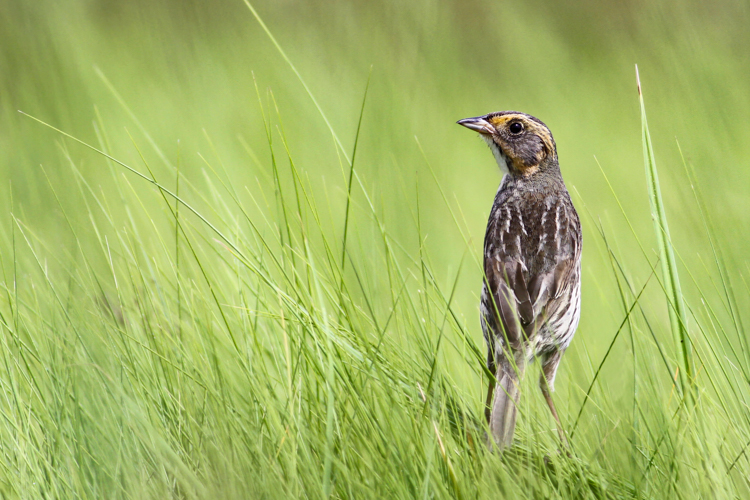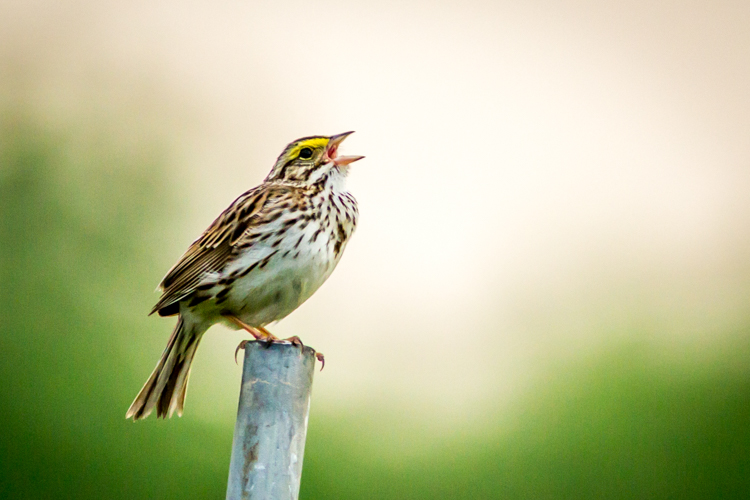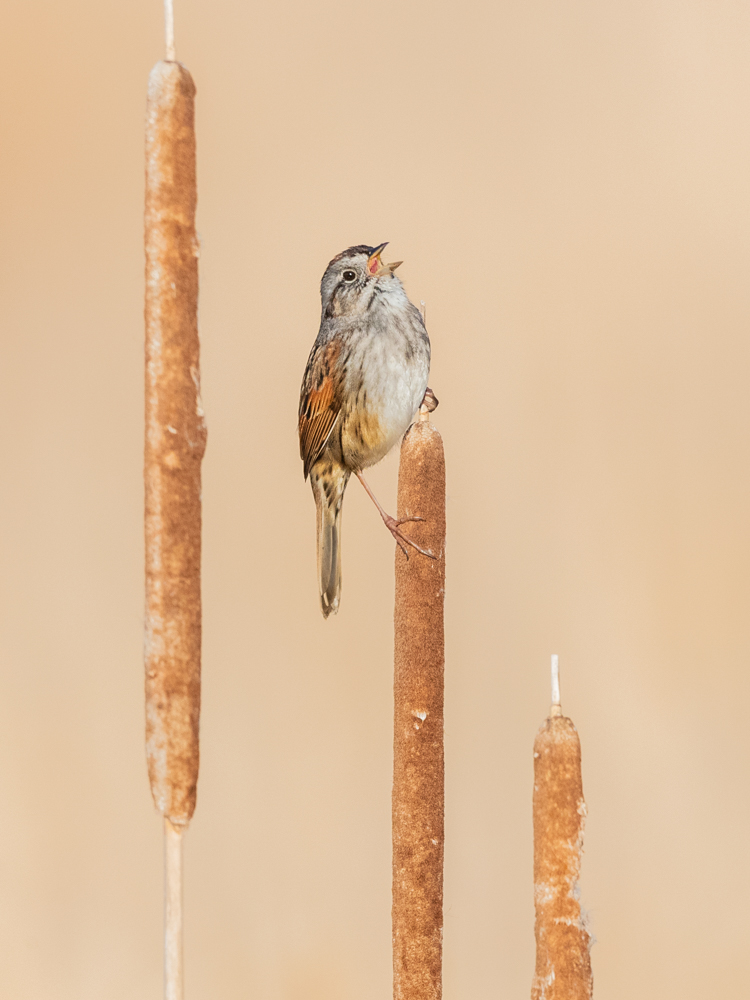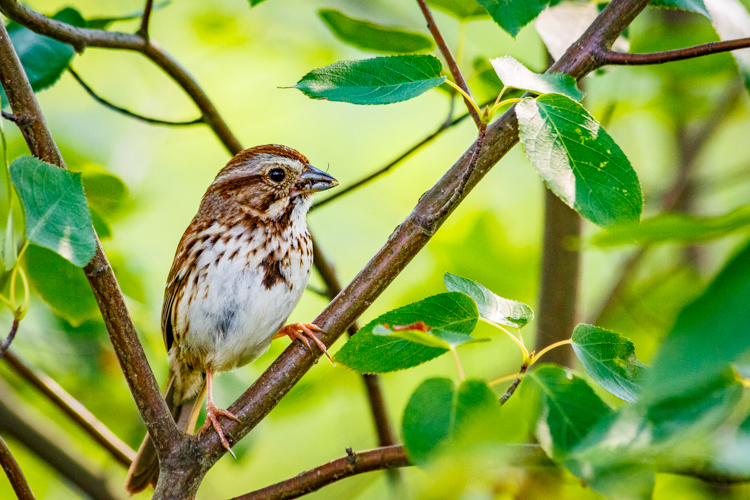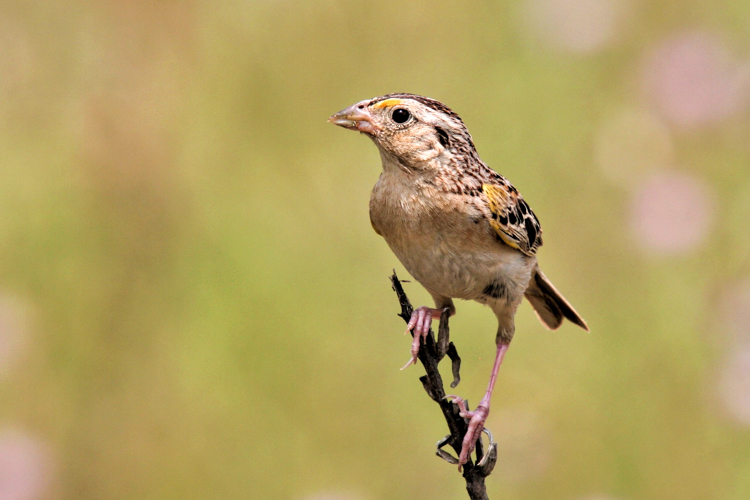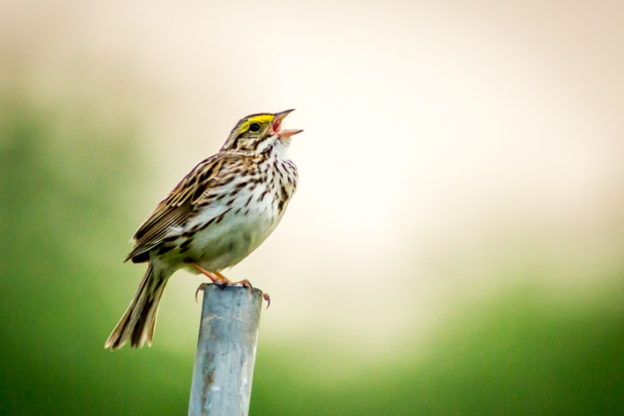There are some birds that scream for attention, like Northern Cardinals or (more literally) Blue Jays. Sparrows are not that kind of bird. Sparrows are subtle, nuanced, and notoriously tricky to tell apart from one species to another. Commonly referred to as “Little Brown Jobs” (LBJs for short), sparrows mostly just run around, eat seeds, and try to stay out of trouble.
One useful tip to narrow down your options from the more than two dozen sparrows that can be found in Massachusetts is to pay attention to habitat. Some species are grassland specialists, like the Grasshopper Sparrow or Savannah Sparrow. As their names suggest, Seaside Sparrows and Saltmarsh Sparrows are most often seen at the shore. Swamp Sparrows prefer freshwater marshes, and Field Sparrows like early successional habitat (recently or frequently disturbed areas, like grasslands, pastures, shrubby thickets, and young forests).
Geography and time of year can be useful as well, as there are some species that only breed in Massachusetts in the western counties, such as White-throated Sparrow and Dark-eyed Junco, but all bets are off during migration when most of these species can be seen almost anywhere.
At that point, your best bet is to narrow down your choices by looking for identifying physical features: Is the breast striped or clear? Is the crown solid or striped? Are there any spots of yellow around the face?
Ask almost any expert for help honing your sparrow identification skills and they’ll likely give you a sympathetic smile and say something encouraging like, “Just keep practicing,” or “Don’t get discouraged.” Sorting out sparrows is, in the end, an exercise in patience and persistence.
If you’d like a leg up on your LBJ-identification training, check out our upcoming online program, Sorting Out Sparrows & Other LBJs. And enjoy these five photos of sparrows from our annual Picture This: Your Great Outdoors photo contest. The 2021 photo contest closes this Thursday, September 30, so submit your own nature photography today!
